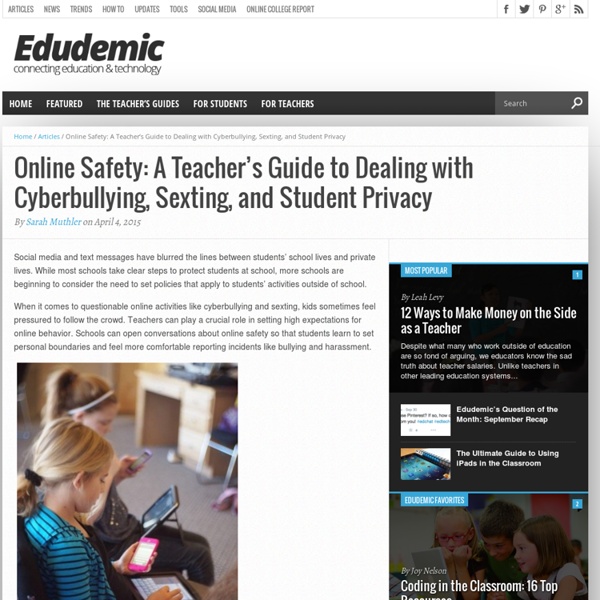What is digital literacy?
Digital literacy is the topic that made the ETMOOC learning space so irresistible to me… I think as educators we spout off about wanting our students to be digitally literate, but not many of us (myself included) have a firm grasp about what that actually means, and quite a number of us are still attempting to become digitally literate ourselves. Whatever that means. It turns out, defining digital literacy isn’t such an easy task. The etmooc community was fortunate enough to hear Doug Belshaw speak on this topic in a recent webinar. I’ve followed Doug on Twitter for quite some time, and it turns out his dissertation investigates just what is digital literacy… and his TED talk can be viewed here. Doug explained that digital literacy is quite ambiguous, and he doesn’t have all of the answers when it comes to defining these terms. 30 definitions of digital literacy represented in one of the first texts about the topic (from Gilster, published in 1998!!)
Digital Literacy | Communication Learning | Media Education | Skills Communication
Cornell University - Digital Literacy Resource
The Urgency of Digital and Media-Literacy Skills
What a fantastic year that has begun – already full of so much possibility and no lack of challenges either! I am faced with the realities of my own personal beliefs that we are in an era of urgent need for digital and media literacy skills. As a result, I know that I have to make changes to my pedagogy that facilitate students acquiring the necessary skills, while still increasing their achievement. I am a big believer in the power of digital media, and the fact that our students are rapidly moving toward a full digital existence, if we aren’t already almost there yet. I know that I already access most things digitally. Digital media has opened up challenges as well. We need to look toward new objects of study and toward connecting with evolving practices and design challenges of the 21st century. After starting the school year, here is what I know so far: It really doesn’t matter how long you have been teaching, classroom management and self-regulation are always at the forefront. Related
Digital Literacy Home
Welcome to the Microsoft Digital Literacy curriculum. Whether you are new to computing or have some experience, Digital Literacy will help you develop a fundamental understanding of computers. The courses help you learn the essential skills to begin computing with confidence, be more productive at home and at work, stay safe online, use technology to complement your lifestyle, and consider careers where you can put your skills to work. Use the menu below to see the Digital Literacy curricula and courses available in your preferred language. The Microsoft Digital Literacy curriculum has three levels. The Basic curriculum features a course called A First Course Toward Digital Literacy. The Standard curriculum is available in four versions. Version 4 uses examples and simulations from Windows 8 and Microsoft Office 2013. Version 3 uses examples and simulations from Windows 7 and Microsoft Office 2010. Version 2 uses examples and simulations from Windows Vista and Microsoft Office 2007.
What is Digital Literacy? | LINCS Community
Colleagues, Below is the introduction to an article I have just written for my Adult Literacy Education blog, Last year the print and digital magazine, TEACH, the largest national education publication in Canada, asked readers “What Does Digital Literacy mean to you?” Is digital literacy really literacy? To read more, and contribute your thoughts, reply to the blog article at You could also copy your reply here. David J. djrosen123@gmail.com
Digital Literacy Resource - Introduction
Digital literacy is the ability to find, evaluate, utilize, share, and create content using information technologies and the Internet. As a Cornell student, activities including writing papers, creating multimedia presentations, and posting information about yourself or others online are all a part of your day-to-day life, and all of these activities require varying degrees of digital literacy. Is simply knowing how to do these things enough? No—there’s more to it than that. Consider how easy it is to cut, paste, share, rip, burn, and post media—at home and in the classroom. Digital literacy is an important topic because technology is changing faster than society is. This digital literacy site is a resource you can come to again and again during your time at Cornell, to get up-to-date information about issues like these.
Definition: Digital Literacy | Educational Tech Ideas
I’ve been working Pat Pehlman to craft a definition for digital literacy and outline skills we believe students need to acquire before graduating from Dickinson College. Defining terms is not my favorite task to say the least. I’m always left with the feeling that I’ve left out far too much, or that I’ve made the definition so vague as to be nearly useless. That being said, it’s necessary since this definition will used to define a digital literacy program that will greatly impact our students’ education at Dickinson College. This is what we have so far. I’d especially welcome comments on the skills section, since that will in turn effect the definition. Definition - As digital media become more important for communication, critical thinking and creativity it is imperative for our students to be digitally literate. Skills: Visual literacy Geospacial literacy Image – creating, finding, editing Data visualization from quantitative analysis



